This site uses cookies as defined in our Cookie Policy, by continuing to use this site you agree to their use.
Continue
| Arrive | Depart | ||||||
| 9th09 | MarMar | 202525 | Baoshan Pt, China, embark on the Spectrum of the Seas | 16:30 | |||
| 10th10 | MarMar | 202525 | At Sea | ||||
| 11th11 | MarMar | 202525 | Osaka, Japan | 14:30 | |||
From Minami's neon-lighted Dotombori and historic Tenno-ji to the high-rise class and underground shopping labyrinths of Kita, Osaka is a city that pulses with its own unique rhythm. Though Osaka has no shortage of tourist sites, it is the city itself that is the greatest attraction. Home to some of Japan's best food, most unique fashions, and warmest locals, Osaka does not beg to be explored—it demands it. More than anywhere else in Japan, it rewards the impulsive turn down an interesting side street or the chat with a random stranger. People do not come here to see the city, they come to experience it.Excluded from the formal circles of power and aristocratic culture in 16th-century Edo (Tokyo), Osaka took advantage of its position as Japan's trading center, developing its own art forms such as Bunraku puppet theater and Rakugo comic storytelling. It was in Osaka that feudal Japan's famed Floating World—the dining, theater, and pleasure district—was at its strongest and most inventive. Wealthy merchants and common laborers alike squandered fortunes on culinary delights, turning Osaka into "Japan's Kitchen," a moniker the city still has today. Though the city suffered a blow when the Meiji government canceled all of the samurai class's outstanding debts to the merchants, it was quick to recover. At the turn of the 20th century, it had become Japan's largest and most prosperous city, a center of commerce and manufacturing.Today Osaka remains Japan's iconoclastic metropolis, refusing to fit Tokyo's norms and expectations. Unlike the hordes of Tokyo, Osakans are fiercely independent. As a contrast to the neon and concrete surroundings, the people of Osaka are known as Japan's friendliest and most outgoing. Ask someone on the street for directions in Tokyo and you are lucky to get so much as a glance. Ask someone in Osaka and you get a conversation.The main areas of the city, Kita (north) and Minami (south), are divided by two rivers: the Dojima-gawa and the Tosabori-gawa. Between Kita and Minami is Naka-no-shima, an island and the municipal center of Osaka. Kita (north of Chuo Dori) is Osaka's economic hub and contains Osaka's largest stations: JR Osaka and Hankyu Umeda. The area is crammed with shops, department stores, and restaurants. Nearby are a nightlife district, Kita-shinchi; Naka-no-shima and the Museum of Oriental Ceramics; Osaka-jo (Osaka Castle); and Osaka Koen (Osaka Park). Restaurants, bars, department stores, and boutiques attract Osaka's youth to Minami (south Chuo Dori); theatergoers head to the National Bunraku Theatre and electronics-lovers to Den Den Town. For a glimpse of old Osaka, visit Tenno-ji Temple and Shin Sekai. The main stations are Namba, Shin-sai-bashi, Namba Nankai, and Tenno-ji. There's easy access to the Municipal Museum of Fine Art and Sumiyoshi Taisha (Sumiyoshi Grand Shrine).The bay area, to the west of the city center, is home to the Osaka Aquarium and Universal Studios Japan. The Shinkansen stops at Shin-Osaka, three stops (about five minutes) north of Osaka Station on the Mido-suji subway line. To the north of Shin-Osaka is Senri Expo Park. | |||||||
| 12th12 | MarMar | 202525 | Osaka, Japan | 04:00 | |||
From Minami's neon-lighted Dotombori and historic Tenno-ji to the high-rise class and underground shopping labyrinths of Kita, Osaka is a city that pulses with its own unique rhythm. Though Osaka has no shortage of tourist sites, it is the city itself that is the greatest attraction. Home to some of Japan's best food, most unique fashions, and warmest locals, Osaka does not beg to be explored—it demands it. More than anywhere else in Japan, it rewards the impulsive turn down an interesting side street or the chat with a random stranger. People do not come here to see the city, they come to experience it.Excluded from the formal circles of power and aristocratic culture in 16th-century Edo (Tokyo), Osaka took advantage of its position as Japan's trading center, developing its own art forms such as Bunraku puppet theater and Rakugo comic storytelling. It was in Osaka that feudal Japan's famed Floating World—the dining, theater, and pleasure district—was at its strongest and most inventive. Wealthy merchants and common laborers alike squandered fortunes on culinary delights, turning Osaka into "Japan's Kitchen," a moniker the city still has today. Though the city suffered a blow when the Meiji government canceled all of the samurai class's outstanding debts to the merchants, it was quick to recover. At the turn of the 20th century, it had become Japan's largest and most prosperous city, a center of commerce and manufacturing.Today Osaka remains Japan's iconoclastic metropolis, refusing to fit Tokyo's norms and expectations. Unlike the hordes of Tokyo, Osakans are fiercely independent. As a contrast to the neon and concrete surroundings, the people of Osaka are known as Japan's friendliest and most outgoing. Ask someone on the street for directions in Tokyo and you are lucky to get so much as a glance. Ask someone in Osaka and you get a conversation.The main areas of the city, Kita (north) and Minami (south), are divided by two rivers: the Dojima-gawa and the Tosabori-gawa. Between Kita and Minami is Naka-no-shima, an island and the municipal center of Osaka. Kita (north of Chuo Dori) is Osaka's economic hub and contains Osaka's largest stations: JR Osaka and Hankyu Umeda. The area is crammed with shops, department stores, and restaurants. Nearby are a nightlife district, Kita-shinchi; Naka-no-shima and the Museum of Oriental Ceramics; Osaka-jo (Osaka Castle); and Osaka Koen (Osaka Park). Restaurants, bars, department stores, and boutiques attract Osaka's youth to Minami (south Chuo Dori); theatergoers head to the National Bunraku Theatre and electronics-lovers to Den Den Town. For a glimpse of old Osaka, visit Tenno-ji Temple and Shin Sekai. The main stations are Namba, Shin-sai-bashi, Namba Nankai, and Tenno-ji. There's easy access to the Municipal Museum of Fine Art and Sumiyoshi Taisha (Sumiyoshi Grand Shrine).The bay area, to the west of the city center, is home to the Osaka Aquarium and Universal Studios Japan. The Shinkansen stops at Shin-Osaka, three stops (about five minutes) north of Osaka Station on the Mido-suji subway line. To the north of Shin-Osaka is Senri Expo Park. | |||||||
| 12th12 | MarMar | 202525 | Kobe, Japan | 07:00 | 15:00 | ||
Located on the calm waters of the Inland Sea, Kobe has served as an important port town for hundreds of years. It was one of the first harbours to accept foreign traders in 1868 when Japan was just emerging from its centuries of isolation. What followed was a surge of Western trade and exports. Today, Kobe is quite multicultural, with expatriates from 98 different nations in residence, providing a cultural diversity most easily visible in restaurants serving every kind of cuisine, including the now world famous Kobe beef. The Great Hanshin Earthquake of 1995 set back Kobe’s development, but not for long. Kobe emerged more vibrant than before - with additional attractions, hotels and urban redevelopment, and only a few remnants of the extensive damage. It is a cosmopolitan place with lively shopping arcades, interesting museums, great restaurants, and a port that is still at the heart of things. Kobe is well known for its nightlife, in an intimate quarter of neon lights, cosy bars and sophisticated nightclubs. It also serves as the gateway to the ancient Japanese capitals of Kyoto and Nara. | |||||||
| 13th13 | MarMar | 202525 | Yokohama, Japan | 13:30 | 23:00 | ||
In 1853, a fleet of four American warships under Commodore Matthew Perry sailed into the bay of Tokyo (then Edo) and presented the reluctant Japanese with the demands of the U.S. government for the opening of diplomatic and commercial relations. The following year Perry returned and first set foot on Japanese soil at Yokohama—then a small fishing village on the mudflats of Tokyo bay. Two years later New York businessman Townsend Harris became America's first diplomatic representative to Japan. In 1858 he was finally able to negotiate a commercial treaty between the two countries; part of the deal designated four locations—one of them Yokohama—as treaty ports. In 1859 the shogunate created a special settlement in Yokohama for the growing community of merchants, traders, missionaries, and other assorted adventurers drawn to this exotic new land of opportunity. The foreigners (predominantly Chinese and British, plus a few French, Americans, and Dutch) were confined here to a guarded compound about 5 square km (2 square miles)—placed, in effect, in isolation—but not for long. Within a few short years the shogunal government collapsed, and Japan began to modernize. Western ideas were welcomed, as were Western goods, and the little treaty port became Japan's principal gateway to the outside world. In 1872 Japan's first railway was built, linking Yokohama and Tokyo. In 1889 Yokohama became a city; by then the population had grown to some 120,000. As the city prospered, so did the international community and by the early 1900s Yokohama was the busiest and most modern center of international trade in all of East Asia. Then Yokohama came tumbling down. On September 1, 1923, the Great Kanto Earthquake devastated the city. The ensuing fires destroyed some 60,000 homes and took more than 40,000 lives. During the six years it took to rebuild the city, many foreign businesses took up quarters elsewhere, primarily in Kobe and Osaka, and did not return. Over the next 20 years Yokohama continued to grow as an industrial center—until May 29, 1945, when in a span of four hours, some 500 American B-29 bombers leveled nearly half the city and left more than half a million people homeless. When the war ended, what remained became—in effect—the center of the Allied occupation. General Douglas MacArthur set up headquarters here, briefly, before moving to Tokyo; the entire port facility and about a quarter of the city remained in the hands of the U.S. military throughout the 1950s. By the 1970s Yokohama was once more rising from the debris; in 1978 it surpassed Osaka as the nation's second-largest city, and the population is now inching up to the 3.5 million mark. Boosted by Japan's postwar economic miracle, Yokohama has extended its urban sprawl north to Tokyo and south to Kamakura—in the process creating a whole new subcenter around the Shinkansen Station at Shin-Yokohama. The development of air travel and the competition from other ports have changed the city's role in Japan's economy. The great liners that once docked at Yokohama's piers are now but a memory, kept alive by a museum ship and the occasional visit of a luxury vessel on a Pacific cruise. Modern Large as Yokohama is, the central area is very negotiable. As with any other port city, much of what it has to offer centers on the waterfront—in this case, on the west side of Tokyo Bay. The downtown area is called Kannai (literally, "within the checkpoint"); this is where the international community was originally confined by the shogunate. Though the center of interest has expanded to include the waterfront and Ishikawa-cho, to the south, Kannai remains the heart of town. Think of that heart as two adjacent areas. One is the old district of Kannai, bounded by Basha-michi on the northwest and Nippon-odori on the southeast, the Keihin Tohoku Line tracks on the southwest, and the waterfront on the northeast. This area contains the business offices of modern Yokohama. The other area extends southeast from Nippon-odori to the Moto-machi shopping street and the International Cemetery, bordered by Yamashita Koen and the waterfront to the northeast; in the center is Chinatown, with Ishikawa-cho Station to the southwest. This is the most interesting part of town for tourists. Whether you're coming from Tokyo, Nagoya, or Kamakura, make Ishikawa-cho Station your starting point. Take the South Exit from the station and head in the direction of the waterfront. | |||||||
| 14th14 | MarMar | 202525 | At Sea | ||||
| 15th15 | MarMar | 202525 | At Sea | ||||
| 16th16 | MarMar | 202525 | Baoshan Pt, China, disembark the Spectrum of the Seas | 07:00 | |||
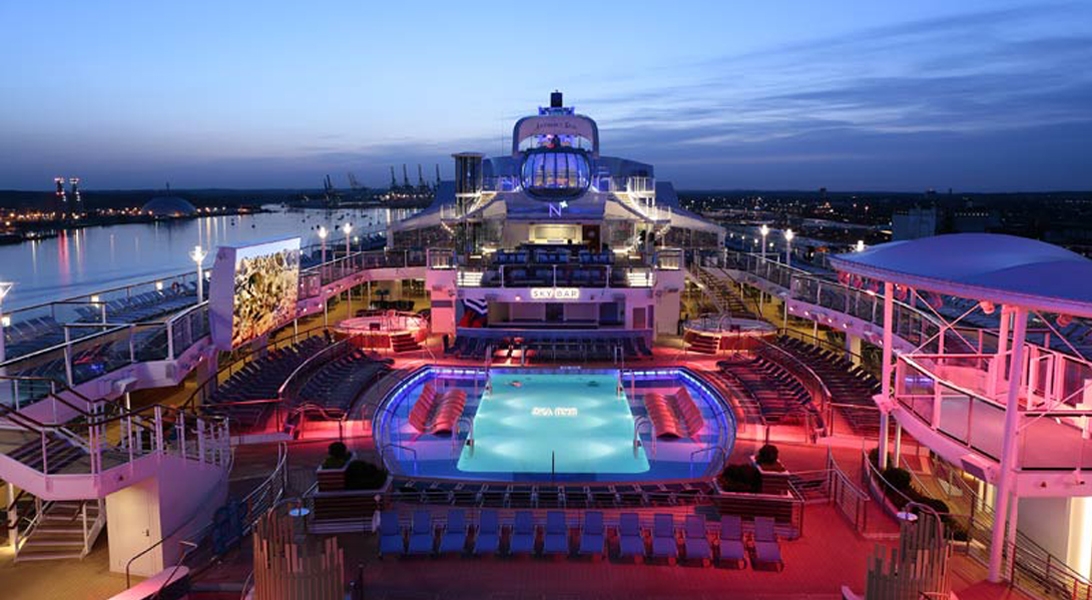
The images shown are for illustration purposes only and may not be an exact representation of what you find on the ship.
The images shown are for illustration purposes only and may not be an exact representation of what you find on the ship.
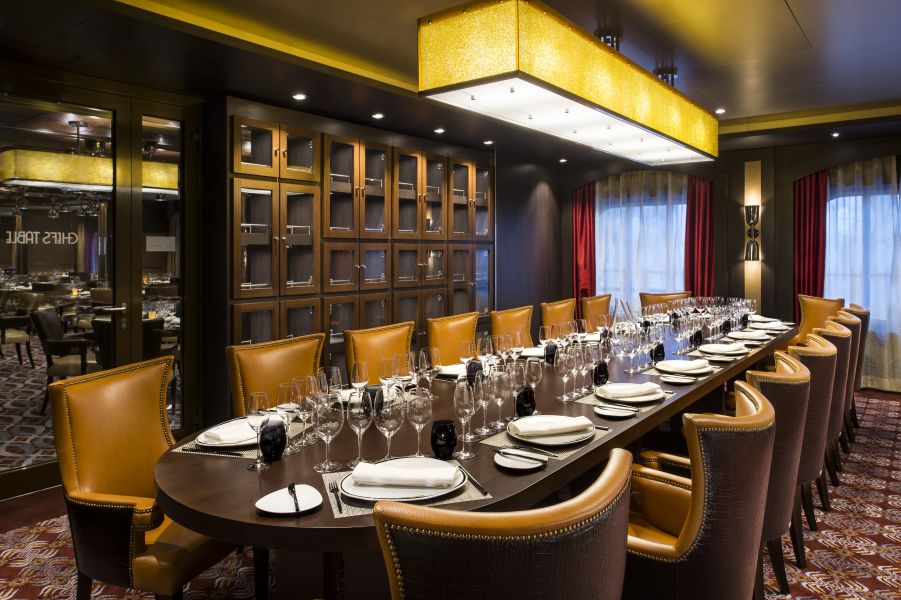
Located in an intimate, exclusive enclave within Chops Grille, this private epicurean experience for up to 16 people treats you to a five-course, upgraded steakhouse menu and wine tasting.
Dinner at Chef’s Table is both experiential and educational, as the Chef de Cuisine specially prepares and presents each course, while explaining its cooking techniques, ingredients and flavours. Then a sommelier pairs every course with wine chosen to enhance your enjoyment of the dish.
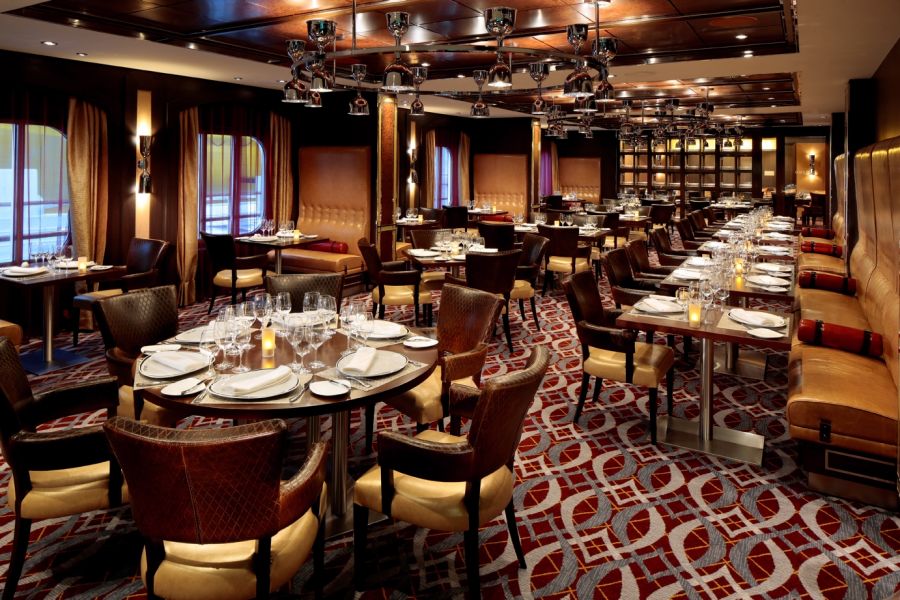
For more than a decade, the chefs of Chops Grille have proudly presented quality, hand cut steaks at Royal Caribbean’s hallmark restaurant. Now, they give you a fresh twist on a favourite, with a revamped menu that brings contemporary flair to traditional steakhouse offerings.
Most intriguing: The first dry-aged steaks at sea, each hand selected and aged for nearly four weeks to achieve the pinnacle of flavour, tenderness, and aroma. This prime beef is joined by Maine lobster, veal parmesan, grilled branzino and more succulent dishes paired with addictive sides and irresistible desserts.
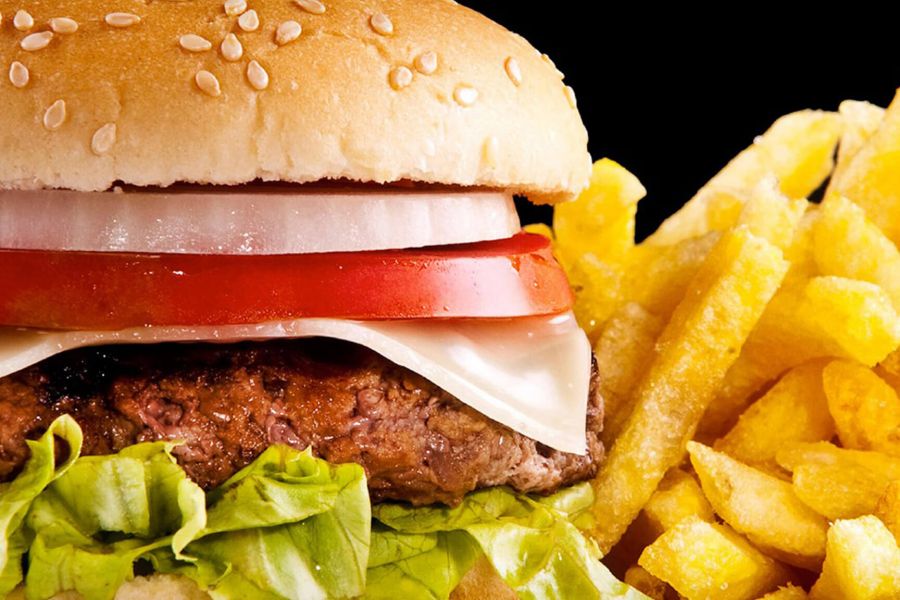
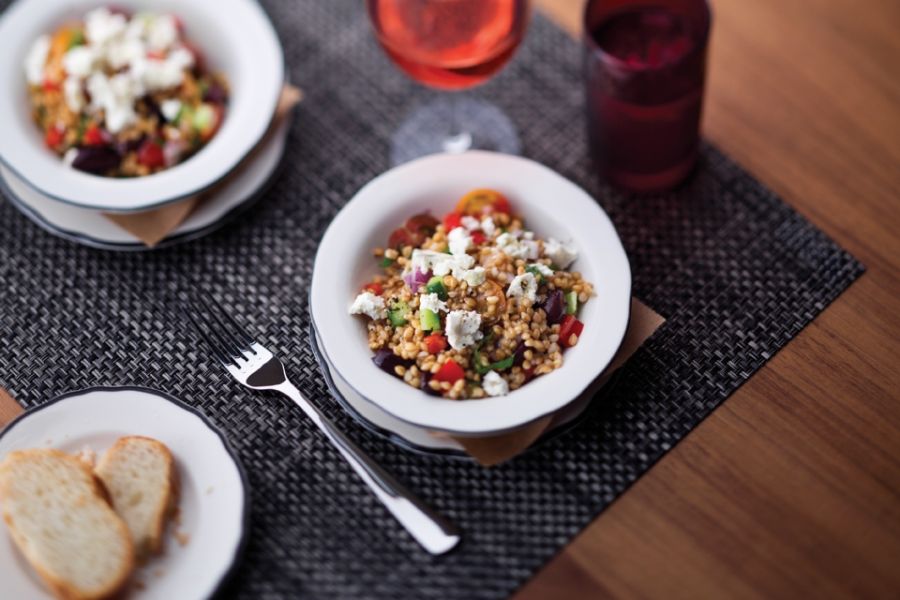
Food and drink. It doesn’t have to be so complicated. That’s the philosophy at Michael’s Genuine Pub, the first American gastropub at sea, brought to you by James Beard and award-winning chef Michael Schwartz.
Start with simple ingredients from the best artisanal producers. Combine them with a warm and friendly setting. Throw in a few more great reasons for people to gather, converse and share—like craft beers, including the chef’s own classic American ale, Michael’s Genuine Home Brew. And for those with their sights set beyond hops, a finely curated list of wine, cocktails and spirits, including bourbon whiskey flights, is sure to warm their cheeks.

Weave your way through a vibrant tapestry of pan-Asian flavours as diverse and nuanced as the Far East itself. Every tapestry tells a story – and this one brings together the greatest characters in the history of exotic cuisine.
Turmeric, cumin and red chili in a slow-cooked lamb curry. Ginger and sesame on crusted tuna. Sake-glazed salmon and teriyaki steak. On an eclectic yet balanced menu inspired by Chinese, Japanese, Thai, Vietnamese and Indian cooking.
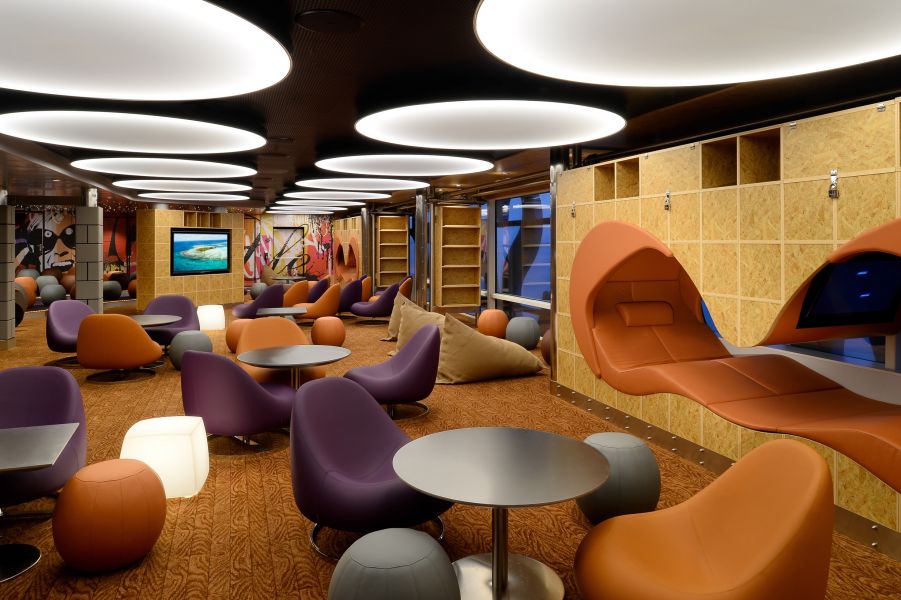
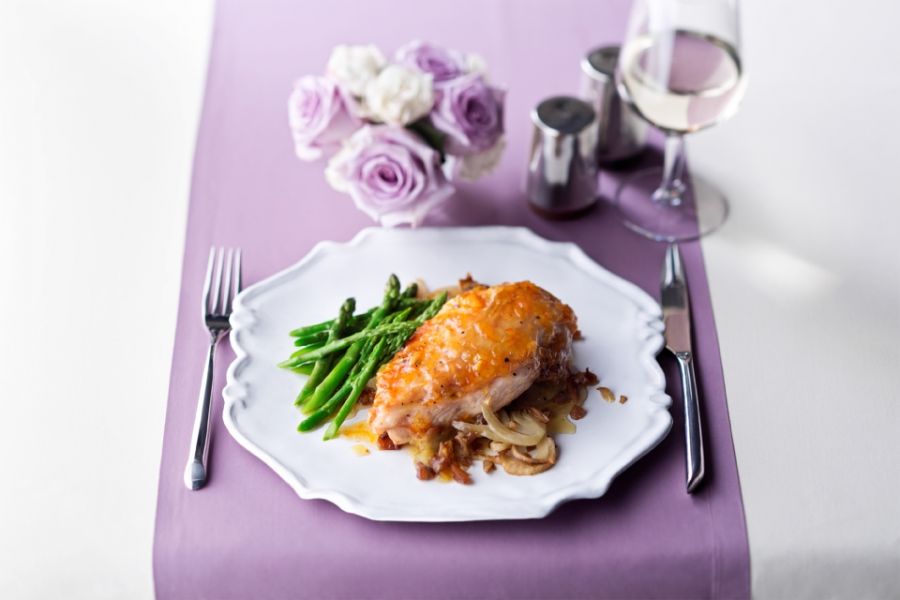
The Grande Restaurant is a luxuriant nod to a bygone era. When dining was not a task, but a time-honored ritual. When you dressed for a date with an unforgettable dish. At The Grande, every night is formal night, and every night is a special occasion.
From Beef Wellington to Chicken a l’Orange, Roasted Scallops to Sole Almondine, the world’s favourite classic dishes come together in pure opulence at Quantum class’ most elegant restaurant.

At Wonderland, our chefs twist their culinary kaleidoscopes to invent an elaborate dreamscape of never-before-seen fare.
The story begins as you open the menu and find your element—Wind, Ice, Fire, Water, Earth and Dreams—each with a selection of small or shareable fantasies. Flash-frozen ice cream tops tender pork belly. Wasabi caviar mingles with spicy tuna cones. Sriracha eggs appear in a plume of smoke. And magical elixirs whisper, “Drink me.” Amidst amorphous mirrors, mystery and sensory surprises, the intention of it all becomes more certain with each maddeningly delicious bite.
The images shown are for illustration purposes only and may not be an exact representation of what you find on the ship.

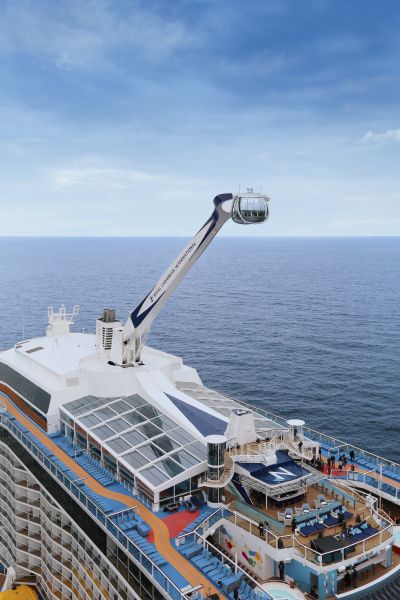

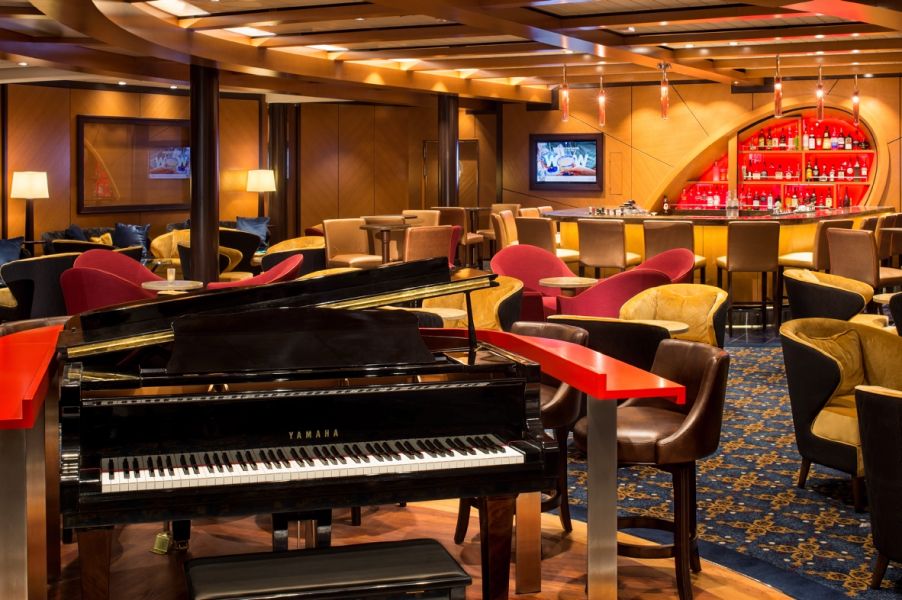
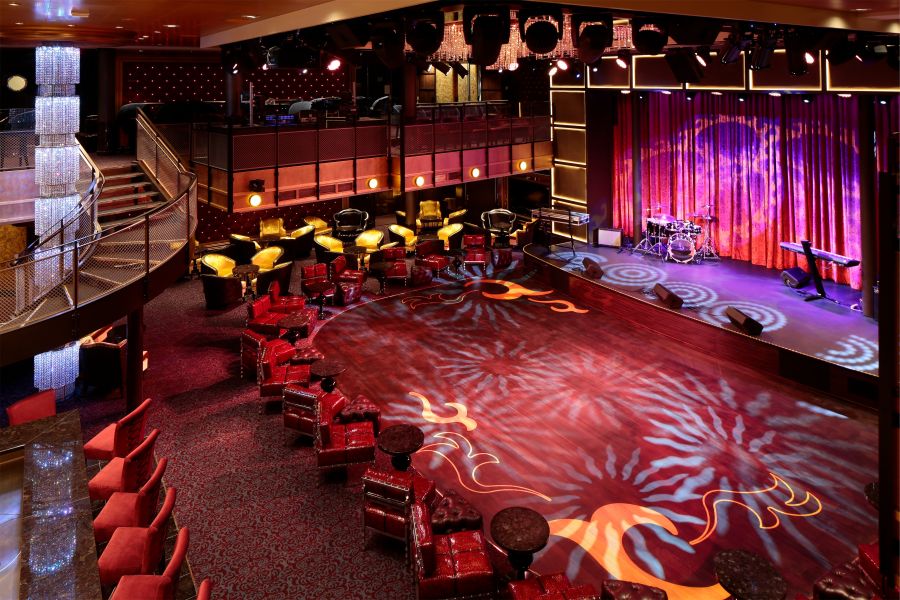
Double take, triple take—take as many as you need. You’ll still swear it’s the real thing. Royal Caribbean International® brings you the best tribute bands anywhere, and now they’re more up-close than ever in the intimate Music Hall, giving you the chance to dance to timeless entertainers from every era.
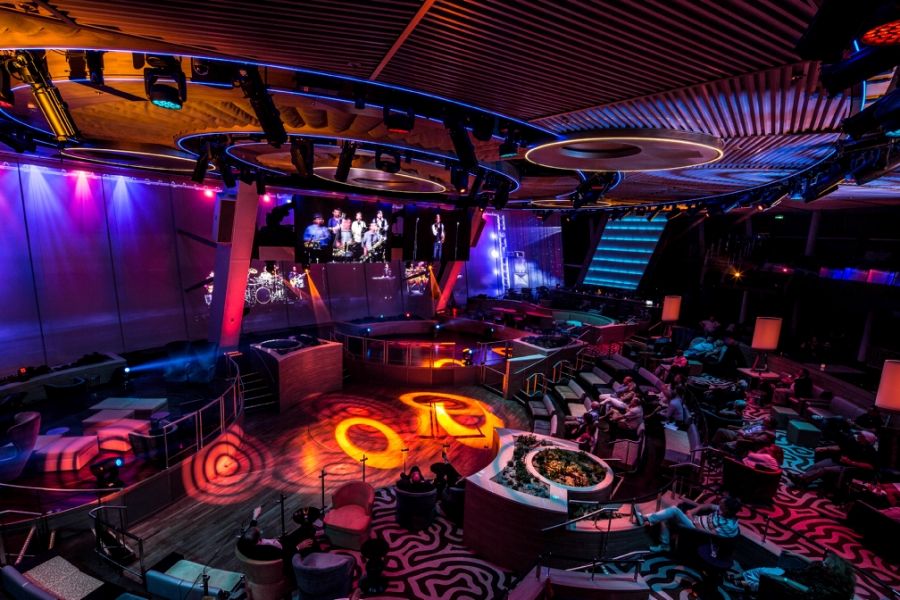
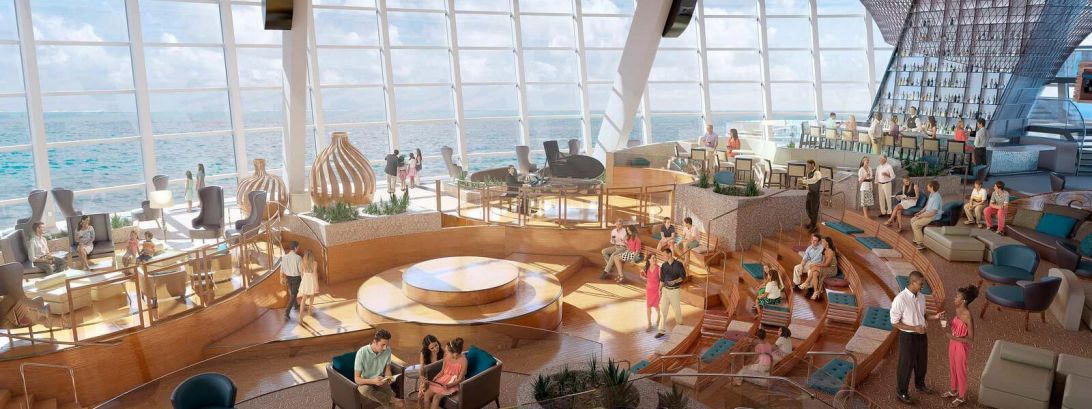
The images shown are for illustration purposes only and may not be an exact representation of what you find on the ship.

Seaplex is the largest, most revolutionary indoor active space at sea. By day kids can shoot some hoops and charge around on a full-size basketball court or master the art of the flying trapeze at the circus school.
Come night-time they can discover the thrills of the first bumper car and roller skate offering at sea – with music from a DJ booth, floating overhead. There’s even a food truck to serve up tasty snacks when hunger pangs hit.
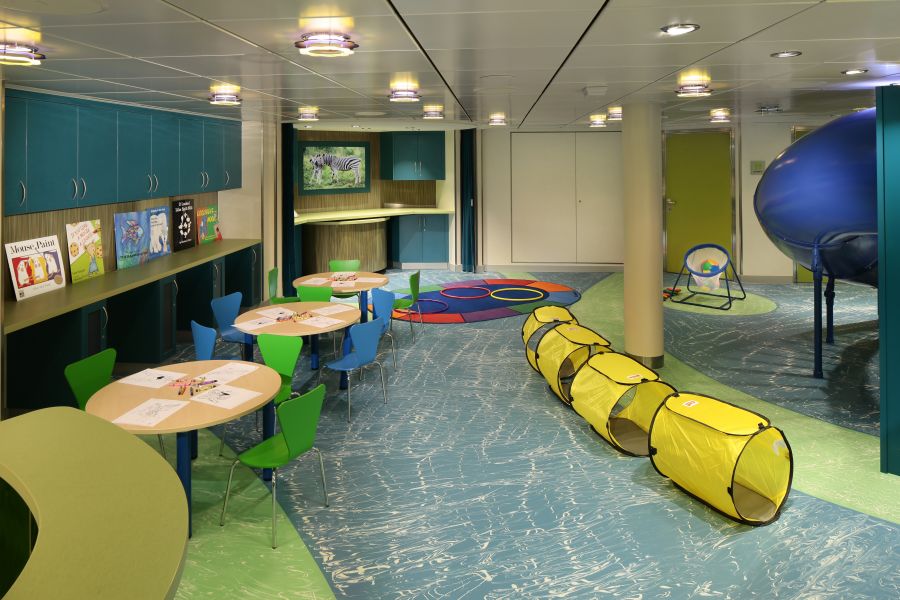
The images shown are for illustration purposes only and may not be an exact representation of what you find on the ship.
| Return flights including luggage allowance | |||
| Overseas Transfers | |||
| 7 nights aboard the Spectrum of the Seas | |||
| Evening entertainment & Broadway style shows | |||
| Choice of traditional or anytime dining | |||
| Drinks Packages available | |||
| Speciality Restaurants (charges may apply) | |||
| 24-hour room service | |||
| Port Taxes and Fees | |||
 | ABTA and ATOL Protection* | ||
Fly/cruise package |
Date 9th Mar 2025 |
Nts 7 |
Interior  |
Oceanview £847pp |
Balcony £886pp |
Suite £1,391pp |
Interior  |
Oceanview £1,823pp |
Balcony £1,862pp |
Suite £2,367pp |
Interior  |
Oceanview £1,840pp |
Balcony £1,879pp |
Suite £2,384pp |
Interior  |
Oceanview £1,877pp |
Balcony £1,916pp |
Suite £2,421pp |
Interior  |
Oceanview £1,886pp |
Balcony £1,925pp |
Suite £2,430pp |
Interior  |
Oceanview £2,029pp |
Balcony £2,068pp |
Suite £2,573pp |
Date 9th Mar 2025 |
Nts 7 |
Interior  |
Oceanview £847pp |
Balcony £886pp |
Suite £1,391pp |
Interior  |
Oceanview £1,823pp |
Balcony £1,862pp |
Suite £2,367pp |
Interior  |
Oceanview £1,840pp |
Balcony £1,879pp |
Suite £2,384pp |
Interior  |
Oceanview £1,877pp |
Balcony £1,916pp |
Suite £2,421pp |
Interior  |
Oceanview £1,886pp |
Balcony £1,925pp |
Suite £2,430pp |
Interior  |
Oceanview £2,029pp |
Balcony £2,068pp |
Suite £2,573pp |






| Oceanview staterooms from | £847pp | ||
| YO | Ocean View Guarantee | £847pp | |
| Balcony staterooms from | £886pp | ||
| 1E | Obstructed Ocean View Balcony | £916pp | |
| 2E | Obstructed Ocean View Balcony | £996pp | |
| 1D | Ocean View Balcony | £912pp | |
| 2D | Ocean View Balcony | £900pp | |
| 3D | Ocean View Balcony | £898pp | |
| 4D | Ocean View Balcony | £1,092pp | |
| 5D | Ocean View Balcony | £898pp | |
| XB | Ocean View Balcony Guarantee | £886pp | |
| 1C | Ocean View with Large Balcony | £956pp | |
| 4C | Ocean View with Large Balcony | £903pp | |
| Suite staterooms from | £1,391pp | ||
| J4 | Junior Suite | £1,391pp | |
| J1 | Junior Suite with Large Balcony | £1,785pp | |
| Oceanview staterooms from | £1,823pp | ||
| YO | Ocean View Guarantee | £1,823pp | |
| Balcony staterooms from | £1,862pp | ||
| 1E | Obstructed Ocean View Balcony | £1,892pp | |
| 2E | Obstructed Ocean View Balcony | £1,972pp | |
| 1D | Ocean View Balcony | £1,888pp | |
| 2D | Ocean View Balcony | £1,876pp | |
| 3D | Ocean View Balcony | £1,874pp | |
| 4D | Ocean View Balcony | £2,068pp | |
| 5D | Ocean View Balcony | £1,874pp | |
| XB | Ocean View Balcony Guarantee | £1,862pp | |
| 1C | Ocean View with Large Balcony | £1,932pp | |
| 4C | Ocean View with Large Balcony | £1,879pp | |
| Suite staterooms from | £2,367pp | ||
| J4 | Junior Suite | £2,367pp | |
| J1 | Junior Suite with Large Balcony | £2,761pp | |
| Oceanview staterooms from | £1,840pp | ||
| YO | Ocean View Guarantee | £1,840pp | |
| Balcony staterooms from | £1,879pp | ||
| 1E | Obstructed Ocean View Balcony | £1,909pp | |
| 2E | Obstructed Ocean View Balcony | £1,989pp | |
| 1D | Ocean View Balcony | £1,905pp | |
| 2D | Ocean View Balcony | £1,893pp | |
| 3D | Ocean View Balcony | £1,891pp | |
| 4D | Ocean View Balcony | £2,085pp | |
| 5D | Ocean View Balcony | £1,891pp | |
| XB | Ocean View Balcony Guarantee | £1,879pp | |
| 1C | Ocean View with Large Balcony | £1,949pp | |
| 4C | Ocean View with Large Balcony | £1,896pp | |
| Suite staterooms from | £2,384pp | ||
| J4 | Junior Suite | £2,384pp | |
| J1 | Junior Suite with Large Balcony | £2,778pp | |
| Oceanview staterooms from | £1,877pp | ||
| YO | Ocean View Guarantee | £1,877pp | |
| Balcony staterooms from | £1,916pp | ||
| 1E | Obstructed Ocean View Balcony | £1,946pp | |
| 2E | Obstructed Ocean View Balcony | £2,026pp | |
| 1D | Ocean View Balcony | £1,942pp | |
| 2D | Ocean View Balcony | £1,930pp | |
| 3D | Ocean View Balcony | £1,928pp | |
| 4D | Ocean View Balcony | £2,122pp | |
| 5D | Ocean View Balcony | £1,928pp | |
| XB | Ocean View Balcony Guarantee | £1,916pp | |
| 1C | Ocean View with Large Balcony | £1,986pp | |
| 4C | Ocean View with Large Balcony | £1,933pp | |
| Suite staterooms from | £2,421pp | ||
| J4 | Junior Suite | £2,421pp | |
| J1 | Junior Suite with Large Balcony | £2,815pp | |
| Oceanview staterooms from | £1,886pp | ||
| YO | Ocean View Guarantee | £1,886pp | |
| Balcony staterooms from | £1,925pp | ||
| 1E | Obstructed Ocean View Balcony | £1,955pp | |
| 2E | Obstructed Ocean View Balcony | £2,035pp | |
| 1D | Ocean View Balcony | £1,951pp | |
| 2D | Ocean View Balcony | £1,939pp | |
| 3D | Ocean View Balcony | £1,937pp | |
| 4D | Ocean View Balcony | £2,131pp | |
| 5D | Ocean View Balcony | £1,937pp | |
| XB | Ocean View Balcony Guarantee | £1,925pp | |
| 1C | Ocean View with Large Balcony | £1,995pp | |
| 4C | Ocean View with Large Balcony | £1,942pp | |
| Suite staterooms from | £2,430pp | ||
| J4 | Junior Suite | £2,430pp | |
| J1 | Junior Suite with Large Balcony | £2,824pp | |
| Oceanview staterooms from | £2,029pp | ||
| YO | Ocean View Guarantee | £2,029pp | |
| Balcony staterooms from | £2,068pp | ||
| 1E | Obstructed Ocean View Balcony | £2,098pp | |
| 2E | Obstructed Ocean View Balcony | £2,178pp | |
| 1D | Ocean View Balcony | £2,094pp | |
| 2D | Ocean View Balcony | £2,082pp | |
| 3D | Ocean View Balcony | £2,080pp | |
| 4D | Ocean View Balcony | £2,274pp | |
| 5D | Ocean View Balcony | £2,080pp | |
| XB | Ocean View Balcony Guarantee | £2,068pp | |
| 1C | Ocean View with Large Balcony | £2,138pp | |
| 4C | Ocean View with Large Balcony | £2,085pp | |
| Suite staterooms from | £2,573pp | ||
| J4 | Junior Suite | £2,573pp | |
| J1 | Junior Suite with Large Balcony | £2,967pp | |
| Interior | Oceanview | Balcony | Suite | |
| (All prices are £GBP per person) | ||||
| Sat 21st Mar 202621 Mar 26 | 714 | 855 | 966 | 1,291 |
Fusion Cruises when selling travel arrangements is a trading name of The Midcounties Co-operative Ltd. Fusion Cruises is an Accredited Body Member of Midcounties Co-operative Travel Consortium. (ABTA:P6652, ATOL:6053).
Book with Confidence. We are a Member of ABTA which means you have the benefit of ABTA’s assistance and Code of Conduct.
Some of the flights and flight-inclusive holidays on this website are financially protected by the ATOL scheme but ATOL protection does not apply to all holiday and travel services offered on this website. This website will provide you with information on the protection that applies in the case of each holiday and travel service offered before you make your booking. If you do not receive an ATOL Certificate then the booking will not be ATOL protected. If you do receive an ATOL Certificate but all parts of your trip are not listed on it, those parts will not be ATOL protected. Please see our booking conditions for information, or for more information about financial protection and the ATOL Certificate go to: www.caa.co.uk
